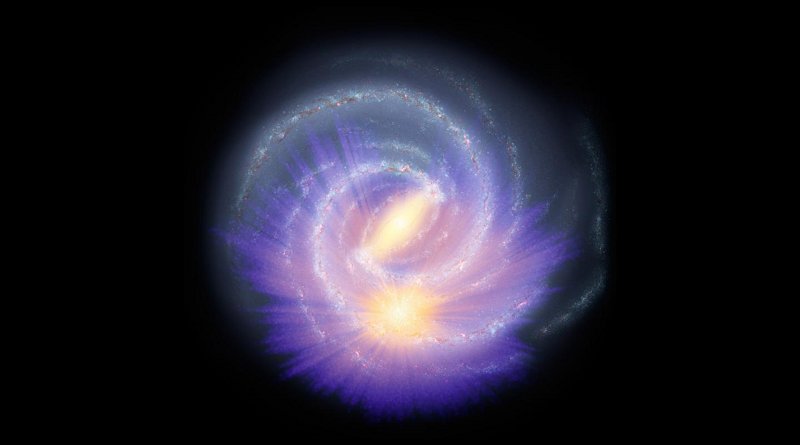Gaia Starts Mapping The Galactic Bar In The Milky Way
The second release of data from Gaia star-mapping satellite, published in 2018, has been revolutionising many fields of astronomy. The unprecedented catalogue contains the brightness, positions, distance indicators and motions across the sky for more than one billion stars in our Milky Way galaxy, along with information about other celestial bodies.
This is just the beginning. While the second release is based on the first twenty-two months of Gaia’s surveys, the satellite has been scanning the sky for five years, and will keep doing so at least until 2022. New data releases planned in coming years will steadily improve measurements as well as provide extra information that will enable us to chart our home galaxy and delve into its history like never before.
Meanwhile, a team of astronomers have combined the latest Gaia data with infrared and optical observations performed from ground and space to provide a preview of what future releases of ESA’s stellar surveyor will reveal.
“We looked in particular at two of the stellar parameters contained in the Gaia data: the surface temperature of stars and the ‘extinction’, which is basically a measure of how much dust there is between us and the stars, obscuring their light and making it appear redder,” says Friedrich Anders ICCUB member and lead author of the new study.
“These two parameters are interconnected, but we can estimate them independently by adding extra information obtained by peering through the dust with infrared observations”, continues the expert.
The team combined the second Gaia data release with several infrared surveys using a computer code called StarHorse, developed by co-author Anna Queiroz and other collaborators. The code compares the observations with stellar models to determine the surface temperature of stars, the extinction and an improved estimate of the distance to the stars.
As a result, the astronomers obtained much better determination of the distances to about 150 million stars – in some cases, the improvement is up to 20% or more. This enabled them to trace the distribution of stars across the Milky Way to much greater distances than possible with the original Gaia data alone.
“With the second Gaia data release, we could probe a radius around the Sun of about 6500 light years, but with our new catalogue, we can extend this ‘Gaia sphere’ by three or four times, reaching out to the centre of the Milky Way,” explains co-author Cristina Chiappini from Leibniz Institute for Astrophysics Potsdam, Germany, where the project was coordinated. At the centre of our galaxy, the data clearly reveals a large, elongated feature in the three-dimensional distribution of stars: the galactic bar.
“We know the Milky Way has a bar, like other barred spiral galaxies, but so far we only had indirect indications from the motions of stars and gas, or from star counts in infrared surveys. This is the first time that we see the galactic bar in three-dimensional space, based on geometric measurements of stellar distances,” says Friedrich Anders.
“Ultimately, we are interested in galactic archaeology: we want to reconstruct how the Milky Way formed and evolved, and to do so we have to understand the history of each and every one of its components,” adds Cristina Chiappini.
“It is still unclear how the bar – a large amount of stars and gas rotating rigidly around the centre of the galaxy – formed, but with Gaia and other upcoming surveys in the next years we are certainly on the right path to figure it out”, notes the researcher.
The team is looking forward to the next data release from the Apache Point Observatory Galaxy Evolution Experiment (APOGEE-2), as well as upcoming facilities such as the 4-metre Multi-Object Survey Telescope (4MOST) at the European Southern Observatory in Chile and the WEAVE (WHT Enhanced Area Velocity Explorer) survey at the William Herschel Telescope (WHT) in La Palma (Canary Islands).
The third Gaia data release, currently planned for 2021, will include greatly improved distance determinations for a much larger number of stars, and is expected to enable progress in our understanding of the complex region at the centre of the Milky Way.
“With this study, we can enjoy a taster of the improvements in our knowledge of the Milky Way that can be expected from Gaia measurements in the third data release,” explains co-author Anthony Brown of Leiden University (the Netherlands).
“We are revealing features in the Milky Way that we could not see otherwise: this is the power of Gaia, which is enhanced even further in combination with complementary surveys,” concludes Timo Prusti, Gaia project scientist at ESA.

